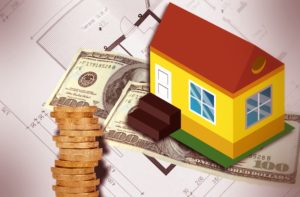 Rising wages could be a counter to higher mortgage rates that are affecting home affordability, according to the First American Real Home Price Index [1] (RHPI) for August 2018.
Rising wages could be a counter to higher mortgage rates that are affecting home affordability, according to the First American Real Home Price Index [1] (RHPI) for August 2018.
The RHPI, which measures the price changes of single-family properties throughout the U.S. adjusted for the impact of income and interest rate changes on consumer house-buying power over time at national, state, and metropolitan area levels indicated that real house prices increased 0.6 percent month-over-month between July and August 2018. Year over year, the data found, prices increased 11.3 percent. On the other hand, a consumer's housing buying power (calculated as how much one can buy based on changes in income and interest rates) decreased 4.7 percent on a year-over-year basis.
"When incomes rise, consumer house-buying power increases. When mortgage rates or nominal house prices rise, consumer house-buying power declines," said Mark Fleming, Chief Economist at First American explaining the dynamics that influence consumer home-buying power.
“Since August 2017, two of the key factors in affordability have risen – mortgage rates increased 67-basis points and unadjusted house prices rose by 6 percent. However, household income growth helps affordability, and household incomes increased by 3.2 percent in August,” Fleming said.
Additionally, he said that wage growth had contributed $11,000 to consumer home-buying power, thus helping mitigate the influences of rising mortgage rates and unadjusted house prices on affordability.
“Mortgage rates are rising because the economy is growing, the labor market is tightening, and wage growth is increasing. Wage growth translates into rising household incomes, which were 3.2 percent higher in August compared to a year ago,” Fleming said. “That growth in household income contributed $11,000 to consumer house-buying power, which helped mitigate the negative effects of rising mortgage rates. While rising mortgage rates reduced house-buying power by $30,000 over the last year, rising incomes increased consumer house-buying power by $11,000. The net effect? Overall consumer house-buying power fell by $19,000 in August compared with a year ago.”
Regionally, five states saw the greatest year-over-year increase in RHPI, with Nevada (22.3 percent increase) leading the way followed by New Jersey (22 percent), Michigan (19.8 percent), Ohio (19.7 percent), and Alaska (18.1 percent).